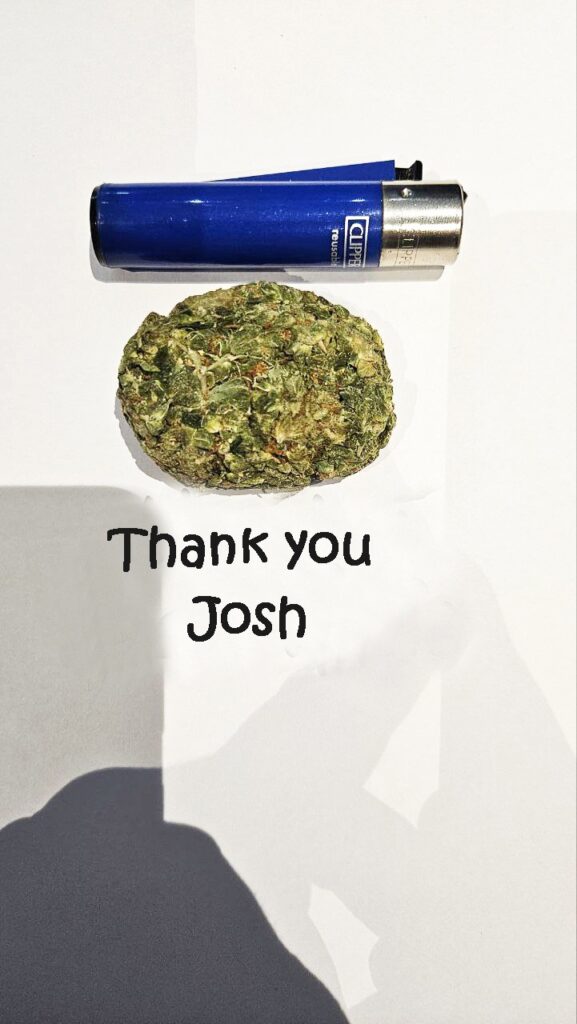Cannabis in Ostuncalco, Guatemala: A Comprehensive Overview

Introduction
Ostuncalco, a quaint municipality nestled in the highlands of Guatemala, is often celebrated for its rich indigenous culture and vibrant community life. With its beautiful landscapes and agricultural heritage, the region has a lot to offer. However, the conversation surrounding cannabis—its legality, cultural significance, and the evolving perceptions of its use—has become increasingly relevant. This article delves into the multifaceted relationship between the people of Ostuncalco and cannabis, exploring its historical context, current legal status, cultural attitudes, and the potential for future developments.
1. Historical Context of Cannabis in Ostuncalco
1.1 The Arrival of Cannabis
Cannabis has a long and complex history in Guatemala, and its introduction to the region can be traced back to:
- Colonial Era: Cannabis was likely introduced during the colonial period by European colonizers who valued the plant for its fibers. It became part of the agricultural landscape in various forms, initially serving practical purposes such as textiles.
- Indigenous Practices: Although cannabis was not a traditional plant for the indigenous communities, its gradual acceptance into local practices reflects the adaptability and resilience of cultural traditions. Over the years, various communities, including those in Ostuncalco, began to recognize its potential uses.
1.2 The Rise of Prohibition on weed in Ostuncalco
In the 20th century, global movements against drug use led to stricter laws regarding cannabis cultivation and consumption:
- Prohibition Laws: The criminalization of cannabis began in earnest in the 1930s, with international treaties paving the way for national legislation. Guatemala followed suit, classifying cannabis as a prohibited substance.
- Impact on Local Communities: The enforcement of these laws disproportionately affected rural communities like Ostuncalco. Many residents engaged in small-scale cultivation for personal use or economic necessity found themselves at odds with law enforcement.
2. Current Legal Status of Cannabis in Ostuncalco
2.1 National Legislation on weed in Ostuncalco
As it stands, cannabis remains illegal in Guatemala, which impacts Ostuncalco significantly:
- Prohibited Status: Under Guatemalan law, cannabis is classified as a narcotic, leading to penalties for possession, cultivation, and trafficking. These laws are strictly enforced, creating an atmosphere of fear surrounding cannabis-related activities.
- No Medical Legislation: Unlike some countries that have embraced medical cannabis, Guatemala lacks a formal framework for medicinal use. This absence restricts access for those who might benefit from cannabis as a treatment option.
2.2 Enforcement and Community Relations/Weed in Ostuncalco
The enforcement of drug laws in Ostuncalco has created complex dynamics between the community and law enforcement:
- Policing Practices: Law enforcement agencies are tasked with upholding drug laws, often conducting raids on suspected cannabis growers. These actions can foster distrust between residents and authorities, complicating community-police relations.
- Fear and Stigma: Many residents continue to use cannabis discreetly due to fear of legal repercussions. This secrecy perpetuates stigma and hinders open discussions about cannabis use in the community.
3. Cannabis Culture in Ostuncalco
3.1 Consumption Patterns on weed in Ostuncalco
Despite legal restrictions, cannabis use is present in Ostuncalco:
- Prevalence Among Youth: Younger generations are increasingly engaging with cannabis, often viewing it as a recreational substance. Social gatherings and celebrations may include cannabis consumption, reflecting a shift in cultural norms.
- Traditional Uses: While cannabis is not a historical staple in indigenous medicinal practices, some locals have begun to adopt its use for relaxation and stress relief. This gradual acceptance reflects broader changes in attitudes toward the plant.
3.2 The Underground Market/Weed in Ostuncalco
The prohibition of cannabis has led to the emergence of an underground market in Ostuncalco:
- Clandestine Cultivation: Some residents grow cannabis discreetly to meet local demand. These operations are often small-scale and hidden from public view to avoid detection by authorities on weed in Ostuncalco.
- Economic Factors: For many families, illegal cannabis cultivation can provide a crucial source of income. The economic necessity complicates the community’s relationship with cannabis, as individuals often rely on it for their livelihoods.
4. Social Attitudes Toward Cannabis
4.1 Evolving Perceptions
Social attitudes towards cannabis in Ostuncalco are gradually changing on weed in Ostuncalco:
- Youth Perspectives: Younger residents increasingly view cannabis as a natural product with potential benefits. This shift is influenced by global trends in cannabis culture and the normalization of its use in many societies.
- Community Dialogues: Some community leaders and advocates are beginning to discuss the potential benefits of cannabis, including its medicinal properties and economic opportunities. These conversations can help reshape public perceptions.
4.2 Remaining Stigmas
Despite evolving views, stigmas surrounding cannabis persist on weed in Ostuncalco:
- Cultural Traditions: Older generations often hold onto traditional beliefs that associate cannabis with moral decline and criminality. This divide creates tension between younger and older community members regarding cannabis use.
- Legal Fears: Many individuals continue to consume cannabis discreetly due to concerns about potential legal consequences. This secrecy perpetuates misunderstandings and hinders open dialogue about cannabis in the community.
5. The Debate on Medical Cannabis
5.1 Advocacy for Medical Use
There is a growing movement advocating for the legalization of medical cannabis in Guatemala, including Ostuncalco:
- Health Benefits: Advocates argue that cannabis can provide therapeutic benefits for a variety of medical conditions, including chronic pain, anxiety, and epilepsy. Access to medical cannabis could significantly improve the quality of life for many patients.
- Personal Stories: Testimonials from individuals who have found relief through cannabis use play a critical role in humanizing the issue and shifting public perception. These narratives help to highlight the potential benefits of medical cannabis.
5.2 Barriers to Legalization
Despite growing advocacy, several obstacles hinder the legalization of medical cannabis:
- Political Resistance: Conservative factions within the Guatemalan government often oppose cannabis reform, citing concerns about public health and safety. This resistance complicates efforts to establish a supportive legal framework for medical cannabis.
- Lack of Awareness: Limited understanding among healthcare providers regarding the medicinal properties of cannabis presents a challenge. Educational initiatives targeting medical professionals are essential for fostering informed discussions.
6. Economic Implications of Cannabis
6.1 Economic Opportunities
Legalizing cannabis in Ostuncalco could yield significant economic benefits:
- Job Creation: A regulated cannabis industry could create jobs in agriculture, manufacturing, and retail sectors. This economic growth could help alleviate poverty and stimulate the local economy.
- Tax Revenue Potential: Legalization could generate substantial tax revenue that could be reinvested in local infrastructure, education, and healthcare. This revenue would benefit the entire community and address pressing social issues.
6.2 Addressing Historical Injustices
Discussions about cannabis legalization must consider historical injustices linked to drug policy enforcement:
- Impact on Marginalized Communities: The enforcement of cannabis laws has disproportionately affected marginalized communities in Ostuncalco. Legalization efforts should prioritize social equity and justice for those most impacted by punitive drug policies.
- Expungement Initiatives: Legalization should include provisions for expunging criminal records of individuals convicted for non-violent cannabis offenses. This measure can help rectify past injustices and promote healing within the community.
7. Future Prospects for Cannabis in Ostuncalco
7.1 Advocacy for Change
The changing conversation around cannabis presents opportunities for reform in Ostuncalco:
- Grassroots Movements: Local advocacy groups are beginning to organize efforts to push for cannabis reform. Building a coalition of supporters can influence local and national policymakers.
- Engaging with Decision-Makers: Advocacy should focus on engaging local leaders and lawmakers to discuss the economic and social benefits of cannabis legalization. Presenting evidence-based arguments can help shift perceptions and garner support.
7.2 Education and Awareness
Increasing public understanding of cannabis is essential for overcoming stigma and fostering informed discussions:
- Community Education Programs: Local organizations can host workshops and seminars to educate residents about cannabis, focusing on its potential benefits and responsible use. This education can empower individuals to make informed choices about their cannabis consumption.
- Utilizing Media Platforms: Leveraging social media and local media outlets can help spread accurate information about cannabis and counter harmful stereotypes. Sharing personal stories and research can foster a more nuanced understanding of cannabis use.
8. Conclusion
The cannabis landscape in Ostuncalco is shaped by a combination of historical, legal, and social factors. While cannabis remains illegal, evolving attitudes and growing advocacy efforts signal a potential shift in the future.
Through education, advocacy, and community engagement, residents of Ostuncalco can navigate the challenges associated with cannabis culture and work toward a future that recognizes its potential benefits. The journey toward understanding and acceptance of cannabis may be challenging, but it is essential for fostering a more inclusive and equitable society.
As discussions about cannabis continue to evolve, Ostuncalco stands at a crucial juncture. By embracing opportunities for reform and promoting informed conversations, the community can shape its narrative surrounding cannabis in a way that reflects its values and aspirations. The future of cannabis in Ostuncalco is still unwritten, but with collective efforts, it can lead to a more enlightened and just society for all its residents.
Ultimately, the cannabis conversation in Ostuncalco is just beginning, and it holds the potential to shape the future of this vibrant community. With determination and solidarity, change is not only possible but attainable, paving the way for a more informed and equitable approach to cannabis in the years to come.

Message Josh on = joshchris385@gmail.com.
he sorted us in style during our little vacation .
Top quality 420bud of different strains you can find around.
You won’t regret getting in touch with him . Highly recommended local plug his telegram / https://t.me/joshlegitplug
we did give it a try and the delivery guy delay like ten minutes but he finally arrived and woow the buds were so good and thank u so much josh.
His dealings are smooth and fast and his buds are so so good.

We were lucky over here Me and my crew enjoy our trip our deliveries was very safe. we ordered both Satis and Indis It was a great experience and great feeling as we mix them both and have a good time.
I contacted him on his telegram and due to security reasons he requested crypto payments which i did, about 30minutes later my dope was dropped at my requested location great guy!!! i highly recommend.
Woow…thank so much for the buds flowers I purchased 10g (this is minimal order) for $100, everything went smoothly i paid with crypto currency as first timer in the morning and tonight he accepted cash on delivery .
“Absolutely love how easy and seamless the process was! The delivery was quick, and the quality is always top-notch. You’ve earned a loyal customer!”